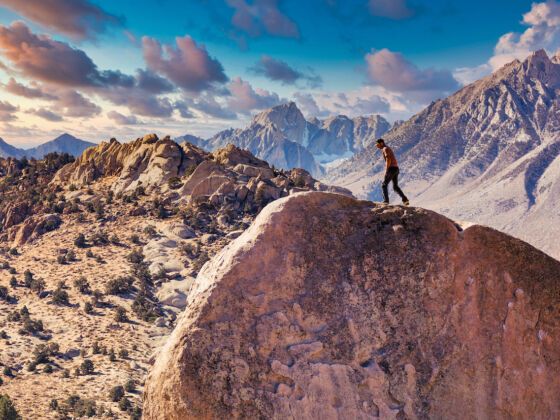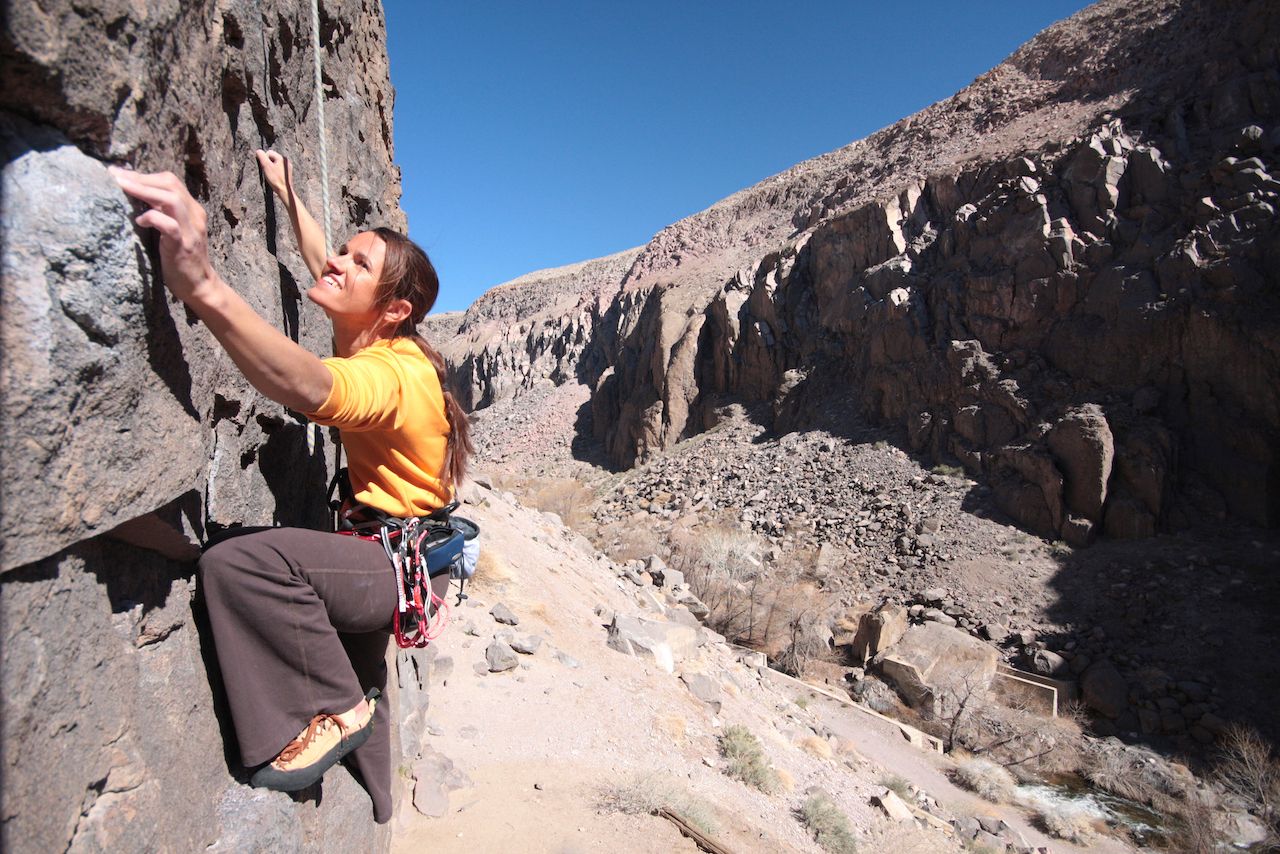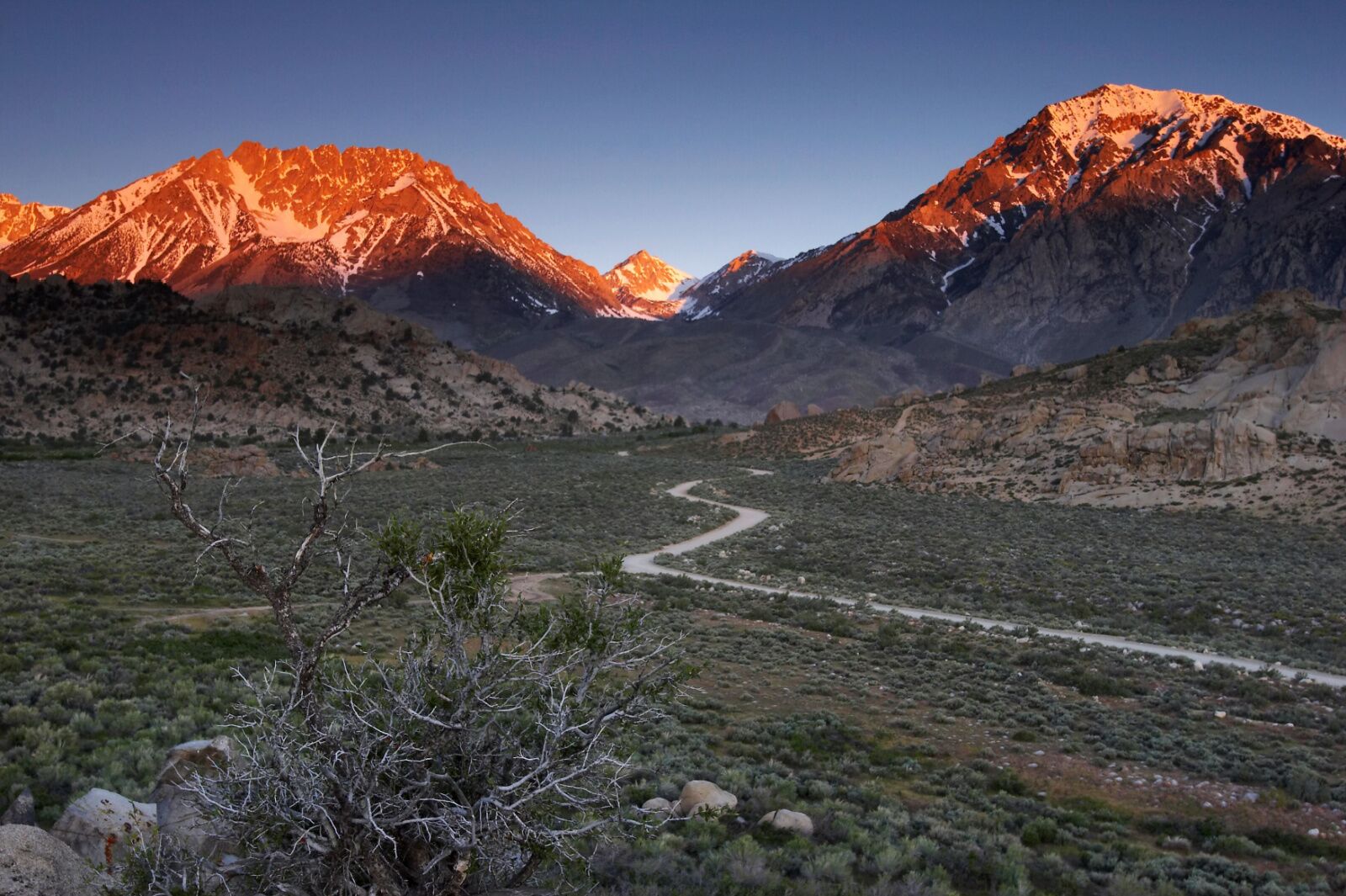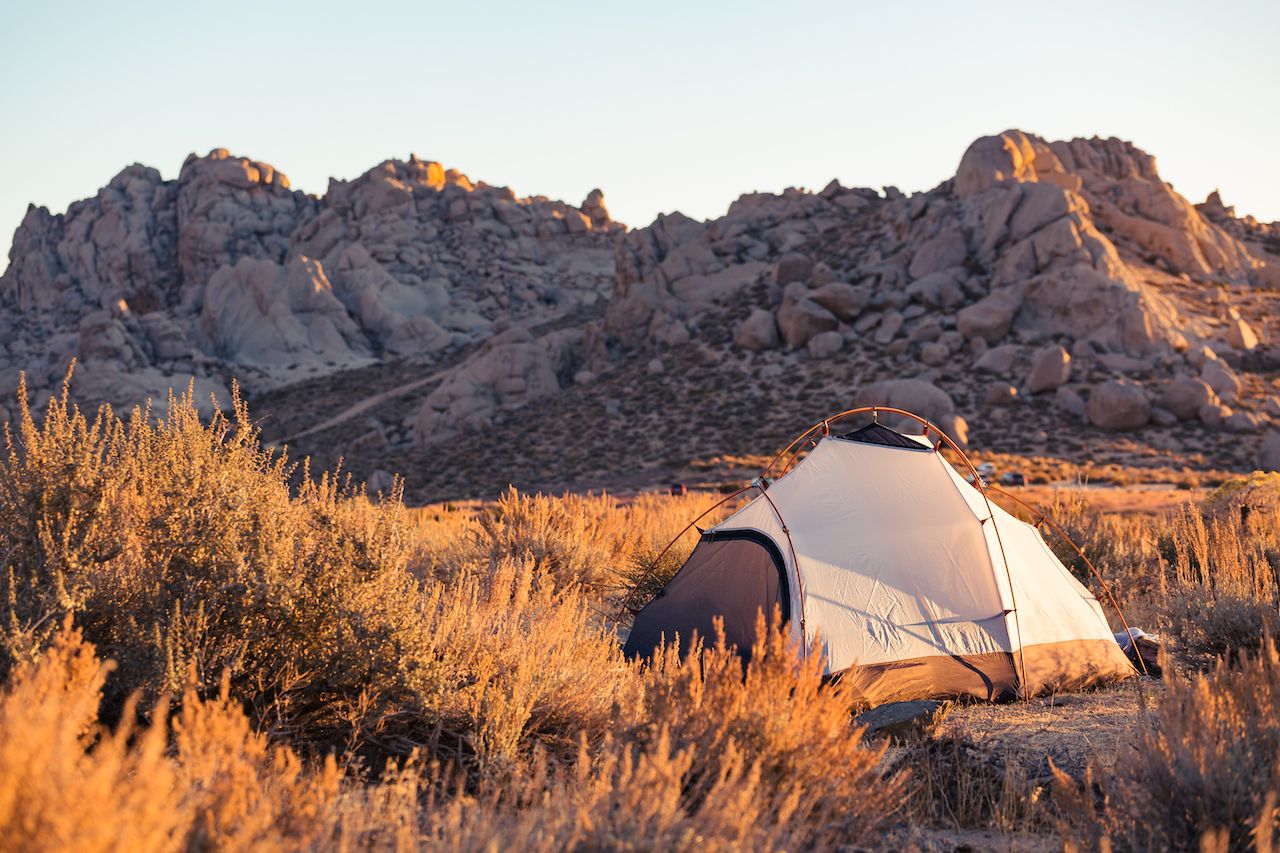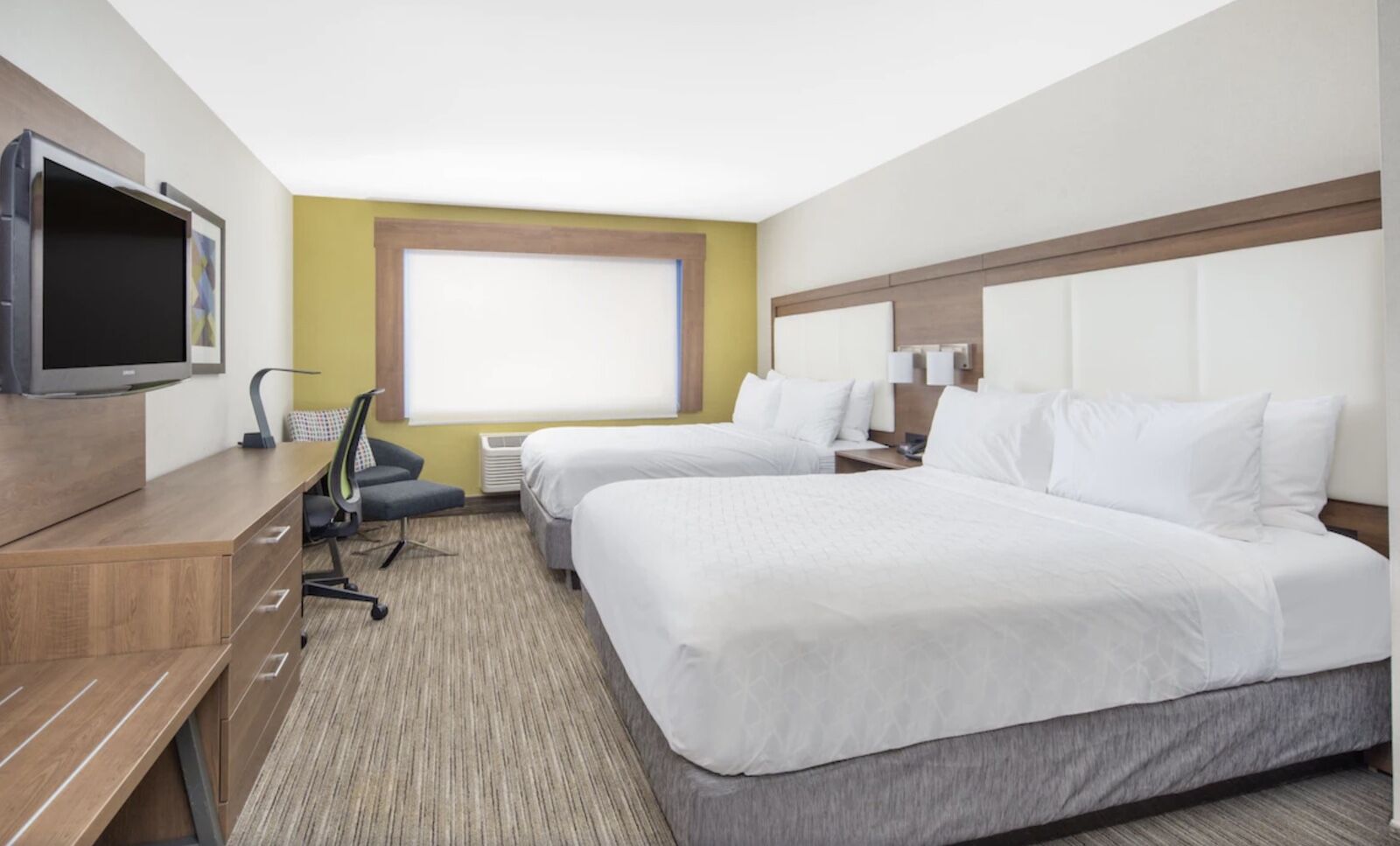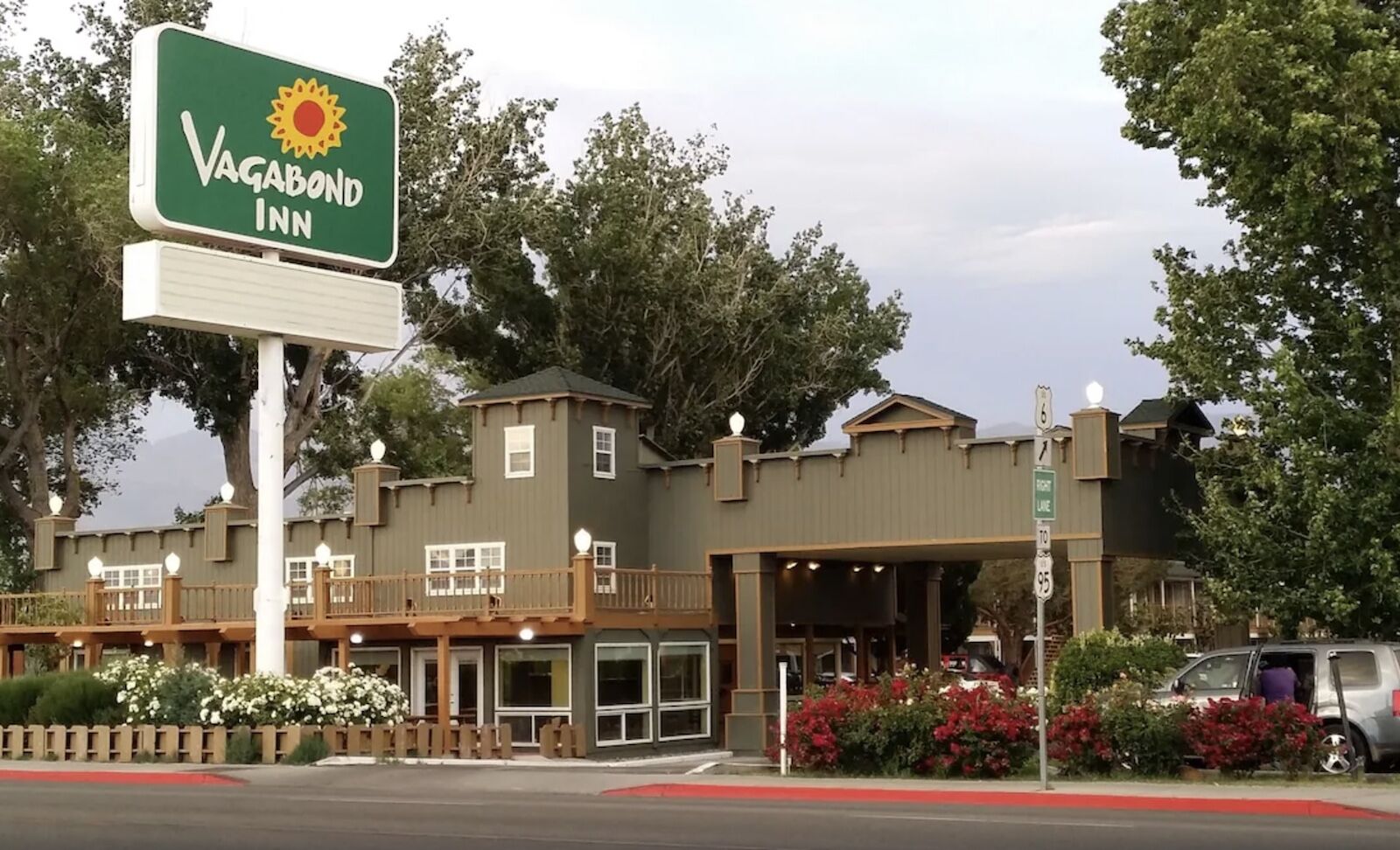Bishop, California, may be a small town, but it’s surrounded by big names in the outdoors: it’s close to Yosemite National Park, Mammoth Mountain, and Mount Whitney (the highest point in the continental US).
However, what it’s not small on is climbing. Bishop climbing is some of the best in the country for both bouldering and wall climbing. It’s in the eastern Sierra Nevada, a few hours south of Lake Tahoe, and (weather permitting), you can usually climb year-round. Add in cheap places to camp, beautiful nearby wilderness areas, plenty of hot springs, and a friendly climbing community, and it’s not surprising that Bishop climbers return year after year after year to put their skills to the test.
